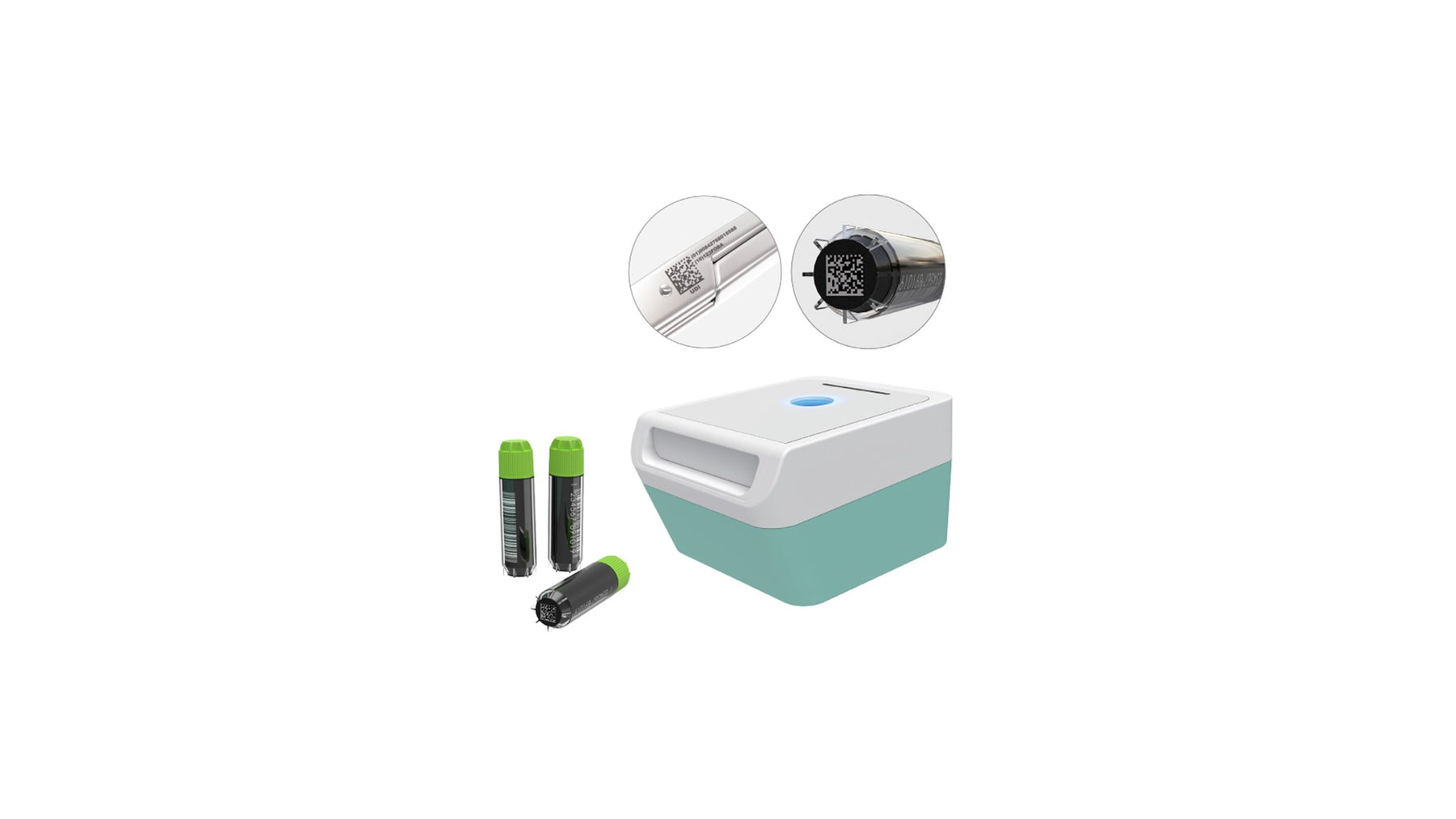Email: ashley@numa-tech.com
Email: sales@numa-tech.com

In an era where precision, speed, and efficiency are crucial to business operations, the Data Matrix code has emerged as a highly effective solution for tracking and managing information. The use of Data Matrix code readers is spreading across various industries due to their ability to store a significant amount of data in a small space, their reliability in challenging environments, and their versatility. This article explores the real-world use cases of Data Matrix code readers, highlighting their transformative impact on diverse sectors.
What is a Data Matrix Code?
A Data Matrix code is a type of 2D barcode consisting of black and white "cells" or modules arranged in a square or rectangular pattern. These codes can encode large amounts of data in a compact format, including text, numbers, and binary data. Their design allows for high data density and error correction, making them robust and reliable even in adverse conditions.
Key Benefits of Data Matrix Codes
- High Data Density: Data Matrix codes can store up to 2,335 alphanumeric characters, allowing them to hold more information than traditional barcodes.
- Error Correction: The built-in error correction capabilities (typically using Reed-Solomon error correction) ensure that the code can be read accurately even if it is partially damaged.
- Small Size: The compact nature of Data Matrix codes makes them ideal for small items or areas with limited space.
- Omnidirectional Reading: Data Matrix codes can be read from any angle, which enhances scanning efficiency and reduces the time needed for orientation.
Real-World Use Cases
- Medication Management: Data Matrix codes are widely used on medication packaging to ensure accurate dispensing. Hospitals and pharmacies use Data Matrix code readers to verify medications, reducing the risk of errors and enhancing patient safety.
- Medical Devices: Medical devices and surgical instruments often have Data Matrix codes for traceability. This ensures that devices are tracked from manufacturing to end-use, facilitating recalls if necessary and ensuring compliance with regulatory standards.
- Part Identification: Automotive manufacturers use Data Matrix codes to track parts throughout the production process. This helps in managing inventory, ensuring quality control, and streamlining assembly line operations.
- Vehicle Identification: Data Matrix codes are used on vehicle components to provide information about the origin, specifications, and assembly, aiding in maintenance and repairs.
- Component Tracking: Data Matrix codes are essential for tracking electronic components through manufacturing and assembly processes. They ensure that each part is accounted for, helping to manage supply chains and prevent counterfeiting.
- Product Identification: Finished electronics products often feature Data Matrix codes for warranty management, customer service, and product recalls.
- Inventory Management: Retailers use Data Matrix codes to manage inventory more efficiently. These codes provide detailed product information, which helps in stock management, reducing shrinkage, and improving restocking processes.
- Shipping and Receiving: In logistics, Data Matrix codes streamline the shipping and receiving processes. Packages labeled with these codes can be quickly scanned and processed, ensuring accurate tracking and timely deliveries.

- Component Tracking: Data Matrix codes are used to track aircraft components, ensuring compliance with strict regulatory standards. This helps in maintaining the safety and integrity of aircraft through precise component history records.
- Maintenance Records: Aircraft maintenance crews use Data Matrix codes to log and retrieve maintenance records efficiently, ensuring that all required inspections and repairs are performed on schedule.
- Traceability: Data Matrix codes on food packaging provide traceability from farm to table. This is crucial for ensuring food safety, managing recalls, and providing transparency to consumers about the origin and handling of their food.

- Quality Control: Producers use Data Matrix codes to track batches of products, ensuring consistent quality and facilitating quick responses to any quality issues.
Implementing Data Matrix Code Readers
When implementing Data Matrix code readers in your business, consider the following factors:
- Reader Compatibility: Ensure the code readers you select are compatible with your existing systems and can handle the volume and speed of scanning required.
- Environmental Conditions: Choose readers that can operate reliably in your specific work environment, whether it involves high temperatures, moisture, dust, or other challenging conditions.
- Training and Integration: Provide adequate training for staff to ensure smooth integration of Data Matrix code readers into your workflows. This includes understanding how to use the readers and how to troubleshoot common issues.
Conclusion
Data Matrix code readers are revolutionizing how businesses handle information, offering a robust, reliable, and efficient solution for a wide range of applications. From healthcare to automotive, electronics to retail, the use of Data Matrix codes enhances accuracy, traceability, and operational efficiency. As industries continue to embrace this technology, the benefits will only grow, driving further innovation and improving the way we manage and track critical information in our modern world.
Find out more information of NUMA Data Matrix code readers, please visit NUMA website https://www.numa-tech.com/. Or please send your inquiry to sales@numa-tech.com for proposal and quote.